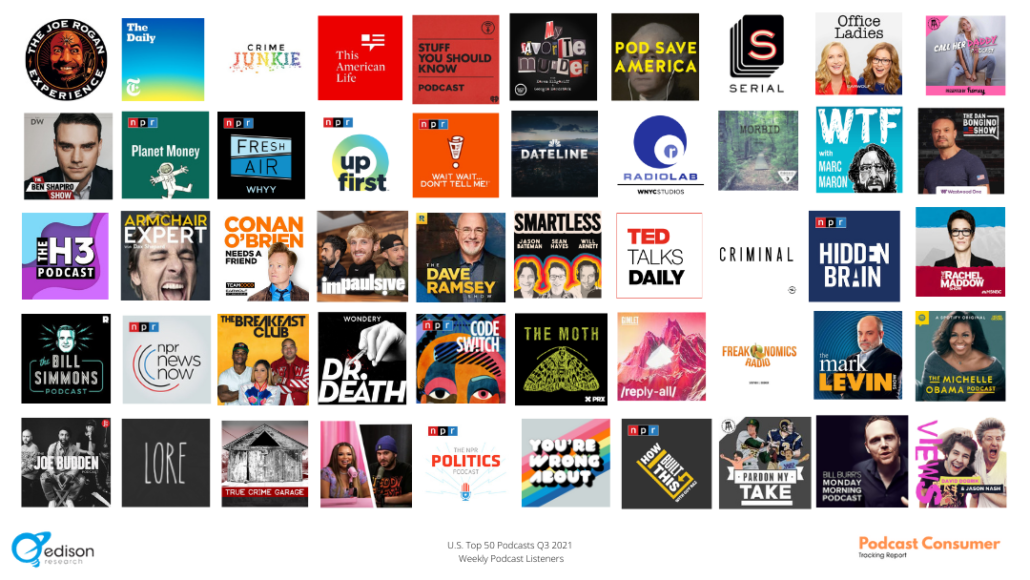None of the 10 most popular podcasts in the U.S. last year debuted in the last couple years, according to Edison Research. They are an average of more than 7 years old, and three of the top five are more than a decade old (“The Joe Rogan Experience”, “This American Life” and “Stuff You Should Know”). Only a few podcasts in the top 50 (“SmartLess”, “The Michelle Obama Podcast”, “Frenemies”) are less than two years old. And none of them are in the top 25.
This trend vexes executives and producers across the podcasting industry, who worry they are wasting a lot of money on new shows. Spotify, Amazon, SiriusXM, iHeartMedia and outside investors have plowed billions of dollars into production companies. Spotify has spent more than anyone, paying about $500 million for three studios. Where is all this money going if these companies aren’t producing new hits?
Pretty much everyone agrees on the reason. There are more podcasts than ever before. Spotify hosts more than 3 million podcasts, up from a few hundred thousand just a few years ago. While the vast majority of those new shows are either defunct or have minuscule audiences, there are still way more podcasts than there were just a few years ago.
The number of new podcasts has grown more quickly than the podcast audience, and so the number of listeners per show is going down. The list of shows competing to be that program you try on your weekend walk is longer than the backlog of TV shows you want to watch.
Lucas Shaw
It seems to me that this last paragraph mainly sums up the answer to this dilemma: podcasts were perceived by many as a new opportunity for content creators, a medium unencumbered by Big Tech platform dynamics such as poor and inconsistent revenue sharing, opaque rankings and rapidly changing moderation policies, and the reliance on algorithmic ads. This led to a large influx of new podcasts, but the audience hasn't followed suit, because people’s attention is more easily captured by short-form videos on TikTok. These figures show that podcasting isn’t immune to the underlying forces of digital content creation, where top performers capture an overwhelming share of the audience – and of revenues.

Personally, I don’t follow any of the shows on this popular list, because I have my own interests and have settled on a bunch of podcasts years ago. Like most people I suspect, I would be hard-pressed to find time during my schedule to fit in more podcasts, and my personal benefit would be pretty marginal.
Another aspect to consider is that these top 10 shows are ongoing, while many new podcasts are ‘limited series’, tackling a subject in-depth before coming to an end. These types of podcasts are very unlikely to make it into a Top 10 list, but contribute to the vibrancy and diversity of this medium nonetheless.
The format itself is in an awkward spot, which it mostly shares with Clubhouse: the information density is lower than written content, from long-form articles to Twitter, where you can quickly scan or search for the relevant bits; and the entertainment value is lower than videos and TV series, because it’s lacking the visual and community aspect (I highly doubt people are listening to podcasts together with their friends and partners, the way they go to the cinema or watch Netflix). Maybe podcasting is destined to remain a relatively niche experience, and lagging audience numbers may reflect a general saturation of the market.
Post a Comment